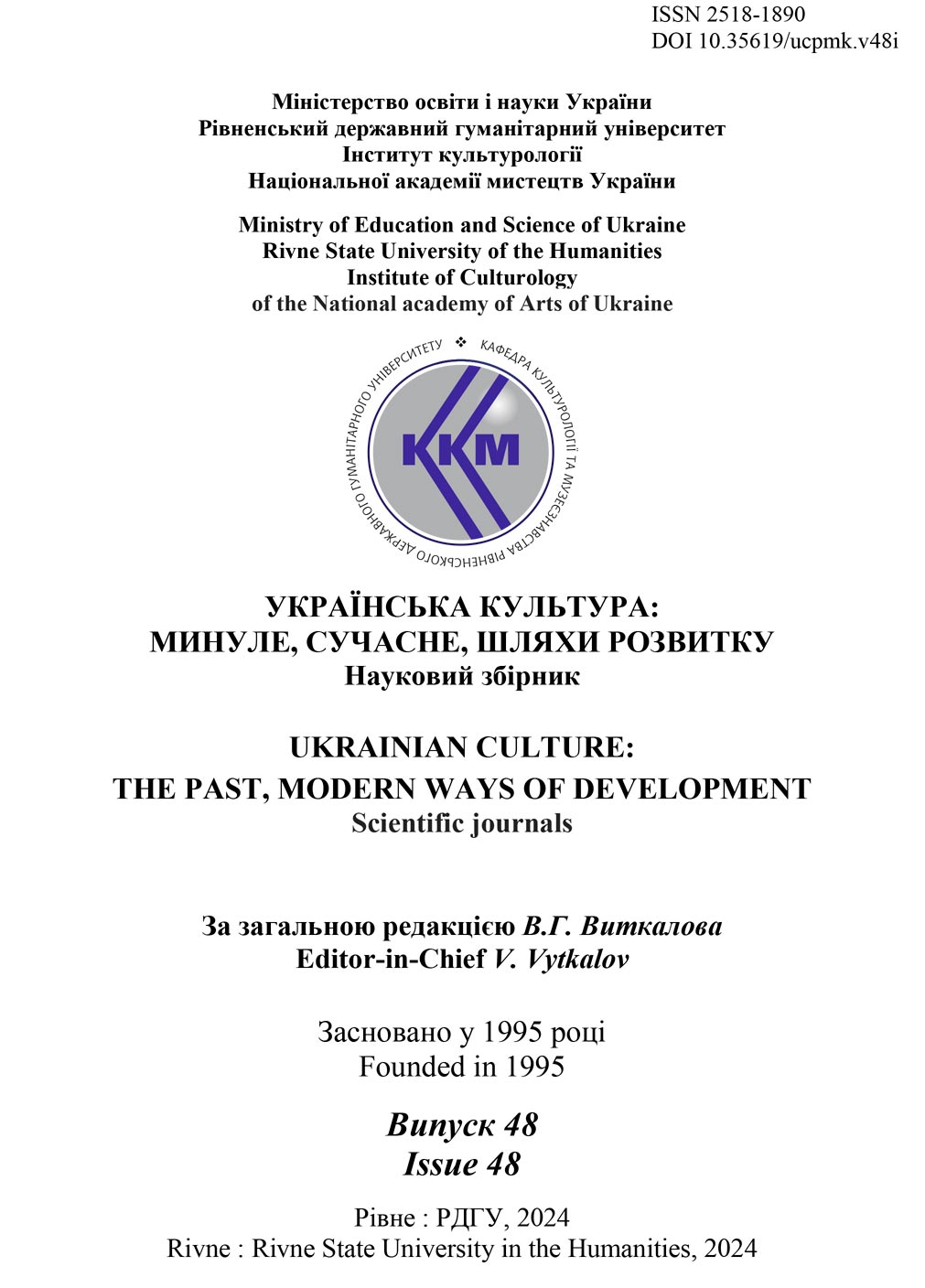ARTISTIC ASPECT OF VARIETY-JAZZ COMPOSITIONS FOR ACCORDION
Abstract
The aim of the article is to substantiate the artistic and artistic aspects of the interpretation of variety-jazz music in the creative process of composer's style and performance style.
Research methodology: The following research methods were used to achieve the goal and solve the tasks: historical retrospective - historical and theoretical aspects of the general development of variety-jazz music, the formation of the foundations of its performing interpretation, the evolution of style patterns are considered in the works of domestic and foreign
scholars; comparative analysis – the interaction of theoretical knowledge with performing practice, which, in turn, establishes a new area of scientific research – ‗Performing Musicology‘. Its goal is to create a general theory of performing arts that integrates the spectrum of all musical instruments and approaches to the formation of performing skills and musician education; systemic – the performing interpretation of variety and jazz music in many cases is free and does not always lend itself to an identical reproduction of the composer's musical text. This is due to the improvisational basis of jazz, the specifics of sound production, phrasing, and the versatility of the rhythmic structure and intonation. The performance style largely depends on several important factors: the orchestral thinking of the musician-interpreter; his/her ability to match the instrument with the ensemble or orchestra; abstraction – identifying and verifying the objectivity of facts and information about the subject of study; classification – musical reproduction is in a communicative process and intersects three directions of the individual's artistic thinking: the composer, who records his thoughts in a musical text, the performer, who reveals the author's intention, and the listener, who perceives it; synthesis and generalisation – processing the studied material and formulating intermediate and general conclusions.
Results. Thus, an important artistic aspect of the interpretation of a musical work is the process of cognition aimed at reflecting the objective content of music both in its preparatory stage and in the creative act itself – at the moment of performance. The creative process of cognition has no limitations; it takes place at the level of ideological and artistic outlook,
knowledge, emotional ‗resources‘, creative imagination, musical abilities, performance technique etc.
Individual personality traits are formed in completely different ways in terms of artistic aspirations, artistic needs, stylistic features of creativity, etc. The main task of an instrumental musician is to perform a piece of music at a highly artistic and technical level of performance skills, to feel the figurative content laid down by the author and to be able to reproduce it
as accurately as possible.
Novelty. The novelty of the interpretation of variety-jazz works for accordion is a special intonation sphere that combines composer's style with performance style. Musical practice poses a special task for accordionists to evaluate multifaceted phenomena related to the creative search for their own model of style creation. Therefore, for every musician, the issue of style and form in music is essential: the instrument and, most importantly, the mastering of the stylistic directions of pop and jazz music and their artistic reproduction in professional performance.


